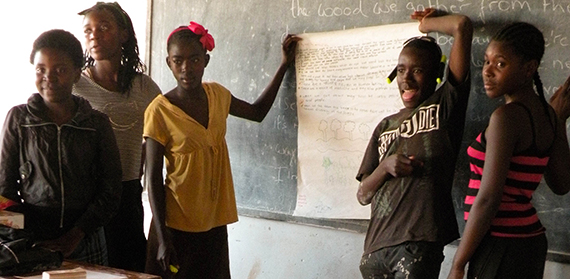by Jackie Abell
Did you know Zambia has the second highest deforestation rate in the world? The United Nations REDD Programme, estimates that Zambia has 50 million hectares of forest, with an estimated deforestation rate of 250,000 to 300,000 hectares per year. One of the most affected areas is here in Livingstone.
The Forestry Department believe the local Dambwa Forest to be disappearing at the rate of 5% per year, which is contributing to increasing temperatures and decreasing rainfall levels. These statistics are alarming for people and wildlife that depend upon the forest for their survival.
Last month I wrote about the practice of poaching and how this applies to natural resources as much as it does to wildlife. One of the principle causes of deforestation here in the Dambwa Forest is the practice of illegal charcoal production for domestic cooking and heating. Trees are felled to produce the much sought after fuel.
Communities rely heavily on the forest to provide fuel for their day-to-day living. Wood and charcoal provide around 70% of Zambia’s energy requirements. Moreover, for an impoverished community, illegal charcoal production is one way of earning an income where no other viable options exist. Sadly, this need is outstripping the resources available, and the current demand is leading to mass clearing of the forest.
ALERT works closely with the Dambwa Joint Forest Management Committee (JFMC), which comprises of Dambwa community members who surround the forest, and the Zambian Forestry Department, to create sustainable solutions to protect and regenerate the forest.
One solution we have been working on is the development and distribution of low-carbon cook-stoves. A pilot study carried out with community members showed that the new cook-stoves reduced reliance on wood by 69% when compared with wood usage required by traditional cooking methods. With funding from the Woodspring Trust, we are currently in the process of making enough cook-stoves to supply every family in the Dambwa community. With the help of local staff, I have also surveyed these families about current usage of the forest for wood, their feelings about the Dambwa Forest, deforestation, and strategies to protect it. Initial analyses show that communities are very keen to protect their Forest and are very aware of the problem caused by unsustainable charcoal production.
The issue isn’t one of not caring for the Forest. Neither is it the case that communities do not understand or care about the need for conservation. They do. The issue is about facilitating and empowering people to make alternative choices so that they can practice sustainable cooking and heating methods. At present, I am surveying every family before they receive a cook-stove about their attitudes and behaviours with respect to the forest and charcoal production. Once these families receive their cook-stove, I then survey them again to see how efficient the cook-stove has been, and their thoughts about the new cooking method.
Another strategy to tackle deforestation at Dambwa is to start a vocational training school, subject to obtaining funding to begin this. Educating and training people to develop culturally appropriate skills, empowers communities to create businesses and/or enter the job market, such that alternatives to generating income other than through illegal charcoal production, exist.
Meanwhile we continue to assess the long-term impact strategies such as this one have for the Forest, and whether we can halt the current deforestation rate of the Dambwa Forest.
No single strategy is going to save the forest, but we can work collaboratively with local people to create a range of alternatives to tackle deforestation. As I stated earlier, people will behave differently if alternatives ways of behaving exist.
The people and wildlife here are relying on them doing so.




Comments are disabled